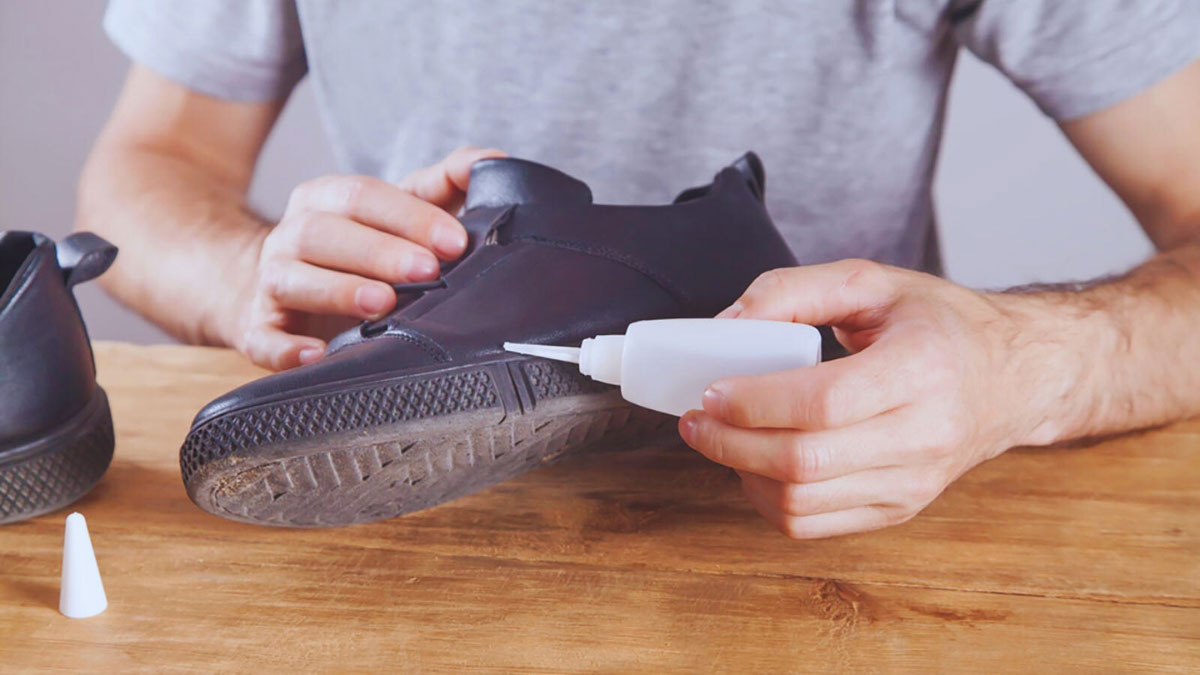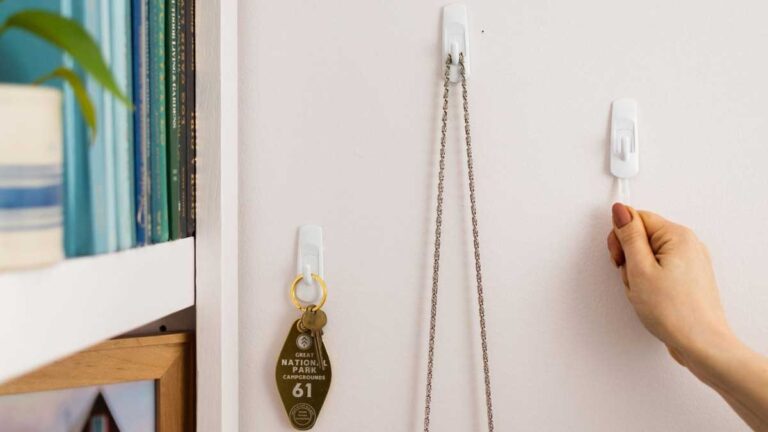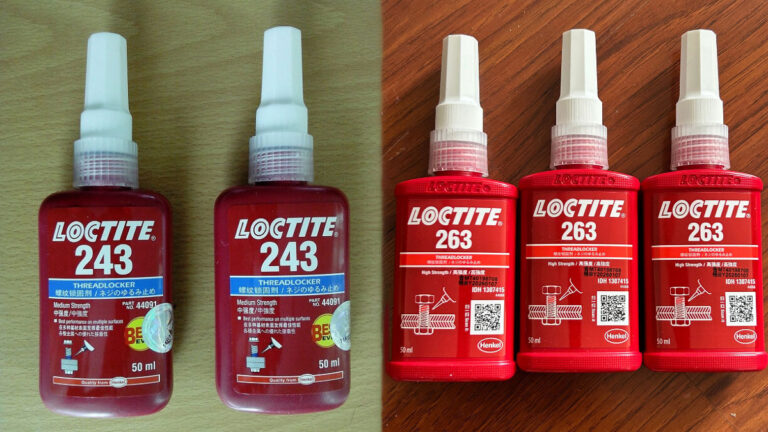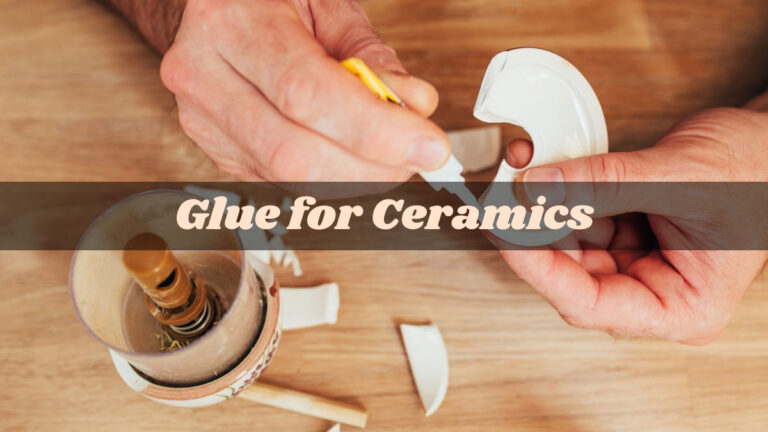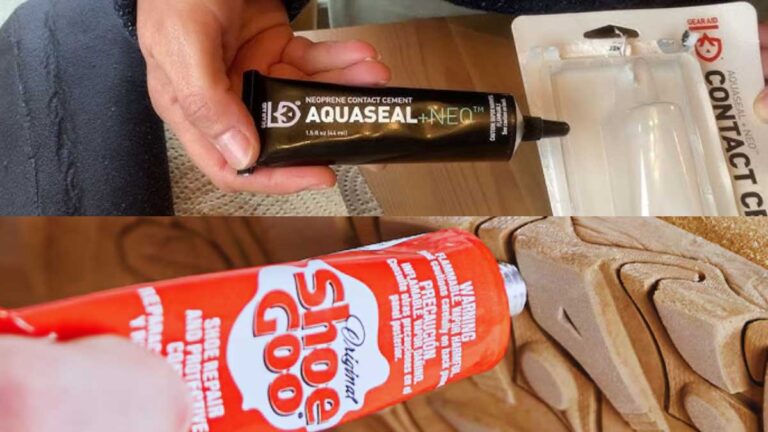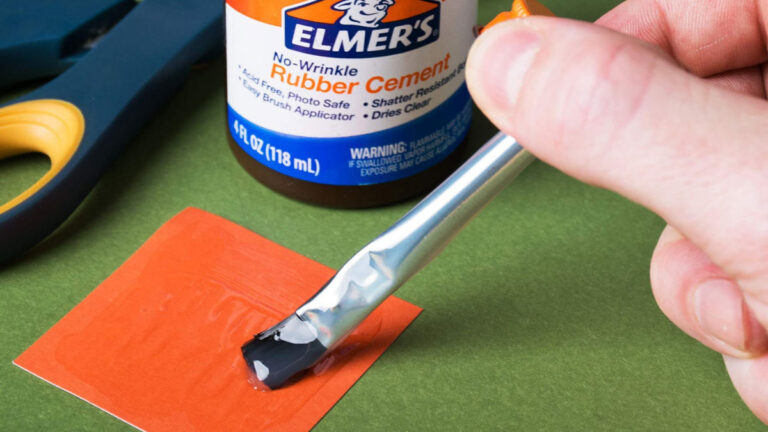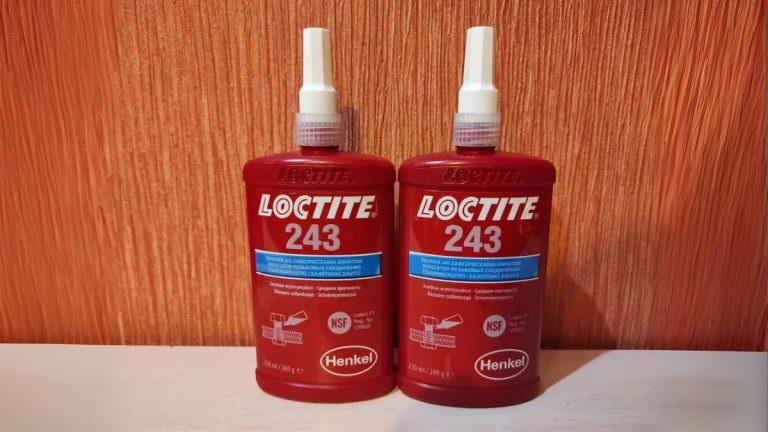Glue for Shoes: Best Adhesives for Long-Lasting Repairs
Ever had your favorite pair of shoes fall apart at the worst possible moment? Whether it’s a sole peeling off or a strap coming loose, shoe damage can be incredibly frustrating. But don’t worry; you don’t need to rush out to buy a new pair just yet. With the right glue for shoes, you can easily fix and extend the life of your beloved footwear.
Choosing the best adhesive for your shoes isn’t just about grabbing the first tube you see. Different materials and types of wear require specific glues to ensure a durable bond. From leather to rubber, knowing which glue works best can save you time, money, and a lot of headaches down the road. Let’s jump into what makes the perfect shoe glue and how to pick the right one for your needs.
Key Takeaways
- Waste Reduction: Repairing shoes with glue can significantly reduce waste by extending the lifespan of your footwear, thus keeping them out of landfills.
- Cost-Saving: Using glue for shoe repairs is a cost-effective way to maintain your favorite footwear without needing to buy new pairs.
- Environmental Impact: Repairing shoes with glue reduces greenhouse gas emissions and energy consumption associated with shoe manufacturing.
- Comfort Maintenance: Properly glued repairs can maintain and enhance the original comfort and fit of your shoes.
- Material Compatibility: Choosing the right glue based on the shoe material ensures a durable and effective repair.
- Step-by-Step Repairs: A well-prepared surface, correct glue application, and sufficient drying time are essential for successful shoe repairs.
Why Use Glue for Shoes?
Opting to use glue for shoe repair comes with numerous advantages that can greatly benefit you and the environment. Here are some compelling reasons why this approach is worth considering:
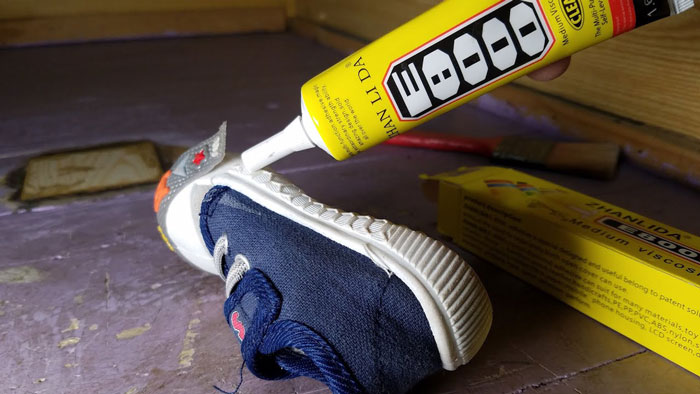
Reduce Waste
Using glue for shoes can cut down on waste. By repairing worn-out soles with adhesive, you extend the lifespan of your footwear. The disposal of shoes contributes significantly to environmental pollution due to the materials used in their production. Reattaching soles or repairing other parts of the shoe reduces the volume of discarded footwear. For instance, if your favorite leather boots have detached soles, a strong adhesive can make them as good as new, keeping them out of landfills.
Save Money
Resoling shoes using glue is a cost-effective method to avoid purchasing new footwear. With the right adhesive, you can reattach or replace soles, saving you the expense of buying new shoes. This is particularly beneficial for high-quality or specialized shoes that would be costly to replace. For example, a good pair of hiking boots can be expensive; repairing them with glue is a viable solution to save money in the long run.
Environmental Benefits
The environmental benefits of using glue for shoe repair are notable. By elongating the lifespan of your shoes, you contribute less to environmental degradation associated with shoe manufacturing and disposal. The shoe production process involves high energy consumption and significant greenhouse gas emissions, according to a study published by MIT. Repairing shoes instead of discarding them helps reduce this negative impact, promoting a more sustainable lifestyle.
Enhanced Comfort
Repairing shoes with glue can also enhance comfort. Ill-fitted or worn-out shoes can cause discomfort or even injuries. By using adhesive to mend and strengthen your footwear, you maintain its original fit and comfort level. For example, reattaching an insole with glue can restore the cushioning and support needed for daily wear, preventing issues like blisters or foot pain.
Key Facts
Here are some key facts about the benefits of using glue for shoes:
- Waste Reduction: Repairing shoes reduces the number of shoes discarded each year.
- Cost-Saving: Using glue to repair shoes is significantly cheaper than purchasing new ones.
- Environmental Impact: Less waste and lower energy consumption contribute to environmental conservation.
- Comfort Maintenance: Repairing rather than replacing ensures your shoes remain comfortable.
Utilizing glue for shoe repairs presents a pragmatic way to support sustainability, save money, and maintain comfort. When selecting the right adhesive, consider the specific materials of your shoes and the type of wear they experience to achieve the best results.
Best Types of Glue for Shoe Repair
When it comes to shoe repair, the type of glue you use can significantly affect the durability and effectiveness of the repair. Here, we’ve categorized some of the best types of glue for shoe repair into general-purpose, specialized, and craft glues.
General-Purpose Shoe Glues
- Loctite Shoe Glue
- Features: Loctite offers a flexible formulation, bonds various materials, resists water and impact, and dries clear.
- Usage: This glue is ideal for repairing rips, tears, and gaps in shoes. It’s versatile, making it suitable for constant flexing and effective on different materials like leather or rubber.
- Shoe Goo
- Features: Designed specifically for footwear, Shoe Goo remains flexible after drying and is waterproof.
- Usage: Excellent for reattaching detached soles, fixing broken heels, and other common shoe repairs. It dries clear, maintaining the appearance of your shoes.
- Gorilla Glue
- Features: Gorilla Glue is ultra-versatile, waterproof, and temperature-resistant.
- Usage: Great for a range of shoe repairs, from reattaching soles to filling in gaps. Its versatility makes it a go-to choice for multiple shoe materials and conditions.
Specialized Adhesives
Some shoe repairs require adhesives designed for specific materials or conditions. These specialized adhesives provide targeted performance where general-purpose glues may fall short.
-
Barge All-Purpose Cement
- Features: Professional-grade, bonds leather, rubber, and vinyl, offers strong adhesion, and is long-lasting.
- Usage: Ideal for high-stress areas or materials requiring strong bonds. Commonly used in professional shoe repair shops for its reliability and strength.
-
E6000 Craft Adhesive
- Features: Industrial-strength, flexible, waterproof, and bonds various materials including leather, fabric, and rubber.
- Usage: Perfect for repairs needing a durable yet flexible bond. It’s especially useful for sports shoes that undergo constant stress and movement.
Craft Glues
For more intricate or creative repairs, craft glues offer precision and flexibility. These glues are typically less durable than general-purpose or specialized adhesives but useful for minor fixes.
-
Aleene’s Original Tacky Glue
- Features: Thick consistency, dries clear, and is suitable for porous and semi-porous materials.
- Usage: Great for fixing decorative elements or minor repairs on fabric or leather shoes. It’s also useful for attaching embellishments without leaving visible residue.
-
Beacon Fabri-Tac
- Features: Quick-drying, flexible, and bonds fabric, leather, and trims.
- Usage: Ideal for attaching fabric patches or decorations. Its quick-drying nature makes it convenient for repairs that need immediate use.
| Glue Type | Features | Ideal Uses |
|---|---|---|
| Loctite Shoe Glue | Flexible, water-resistant, impact-resistant, dries clear | Rips, tears, gaps |
| Shoe Goo | Flexible after drying, waterproof | Detached soles, broken heels |
| Gorilla Glue | Ultra-versatile, waterproof, temperature-resistant | Various shoe repairs |
| Barge All-Purpose | Professional-grade, strong adhesion, bonds leather/rubber | High-stress areas, professional use |
| E6000 Craft | Industrial-strength, flexible, and waterproof | Sports shoes, durable repairs |
| Aleene’s Tacky | Thick consistency, dries clear, suitable for porous materials | Decorative elements, minor fixes |
| Beacon Fabri-Tac | Quick-drying, flexible, bonds fabric/leather/trims | Fabric patches, decorations |
By knowing the strengths and uses of each type of glue, you can choose the right one for your shoe repair needs.
Factors to Consider When Choosing Glue for Shoes
Selecting the right glue for shoe repairs involves several important considerations to ensure a durable and effective bond. Here are the key factors to consider:
Material Compatibility
Understanding the materials involved is crucial for achieving a strong, lasting bond. Different glues have specific properties that make them suitable for various materials.
- Leather, Rubber, and Vinyl: Loctite Shoe Glue excels with these materials, providing flexibility and a durable hold.
- Porous Materials: E6000 Craft Adhesive works effectively for materials like fabric and canvas, offering a robust, flexible bond.
- Smooth Surfaces: For hard plastic or metal, roughening the surface with fine-grit sandpaper enhances adhesion before applying glue.
Drying Time
The drying time of glue affects both the speed of repair and the bond strength. Choosing the right one based on your time constraints is essential.
- Fast Setting: Boot-Fix Glue sets almost instantly, making it ideal for urgent repairs. This means you can use your shoes shortly after application.
- Standard Drying: Glues that take longer to set might provide a stronger bond but require patience and proper clamping.
Bond Strength
Ensuring the glue can withstand the stresses and strains of regular use is fundamental for a lasting repair.
- High Stress Areas: For parts of the shoe that endure significant wear and tear, like soles and heels, choose a strong adhesive like Barge All-Purpose Cement.
- Flexibility Required: For areas that need flexibility, such as straps, a flexible adhesive like E6000 Craft Adhesive prevents cracking and ensures comfort.
Data Table
Here’s a summary of key glues and their attributes.
| Glue Type | Material Compatibility | Drying Time | Bond Strength |
|---|---|---|---|
| Loctite Shoe Glue | Leather, Rubber, Vinyl | Standard | Durable, flexible |
| E6000 Craft Adhesive | Fabric, Canvas | Standard | Robust, flexible |
| Boot-Fix Glue | Various (general purpose) | Instantaneous | Strong, quick set |
| Barge All-Purpose | High-stress areas on all | Moderate | Extremely strong, especially for heavy-duty repairs |
Choosing the correct glue is pivotal for effective shoe repair. By understanding material compatibility, drying time, and bond strength, you can select the ideal adhesive for your specific needs.
Step-by-Step Guide to Using Shoe Glue
Using shoe glue can significantly extend the lifespan of your footwear. Follow this guide to ensure effective and long-lasting repairs.
Preparation: Clean and Inspect Surfaces
- Clean the Surfaces: Make sure the surfaces to be glued are devoid of grease, dust, and other contaminants. This is crucial for achieving a strong bond.
- Inspect the Damage: Evaluate how much damage there is to know the area that needs to be glued. For sole separations, pry open the area to see how far the damage extends.
- Roughen Smooth Surfaces: If the surfaces are smooth, like hard plastic or metal, roughen them with fine grit sandpaper to improve adhesion.
Applying the Glue
- Choose the Right Glue: Select a suitable shoe glue from the options below:
- Contact Cement: Known for strong bonding properties. Works well on leather, rubber, and fabric.
- Super Glue: Best for quick fixes on hard surfaces.
- Urethane Adhesive: Ideal for flexible materials like rubber and neoprene.
- Epoxy: Best for high-strength, rigid bonds.
- Shoe Goo: Perfect for minor repairs and preventive maintenance.
Securing and Drying
- Apply the Glue Evenly: Spread a uniform layer of glue to both surfaces. Depending on the glue type, you may need to wait a few minutes before pressing the surfaces together.
- Press the Surfaces Firmly: Ensure the surfaces make full contact. Use clamps or heavy objects to maintain pressure.
- Allow the Glue to Cure: Wait for the glue to dry completely. Drying time varies by glue type—from 24 hours for contact cement to several days for urethane adhesive.
Summary or Action Point
Adhering to this step-by-step guide ensures that you maximize the effectiveness of shoe repairs. A well-prepared surface, appropriate glue choice, and proper drying time are essential for durable repairs. For even stronger bonds, consider following manufacturer recommendations for each adhesive type.
Tips for a Successful Shoe Repair
Ensuring a successful shoe repair requires careful attention to detail and the right materials. Follow these steps and recommendations to achieve a durable fix.
Choose the Right Glue
Selecting the appropriate adhesive is crucial for effective repairs. Here’s a breakdown of popular glue types and their ideal uses:
- Loctite Shoe Glue: Flexible and durable, suitable for materials like leather, rubber, and plastic.
- E6000 Craft Adhesive: Industrial-strength and flexible, perfect for leather, rubber, metal, and plastic.
- Contact Cement: Preferred by professional cobblers, ideal for bonding rubber layers to shoe soles. Requires surfaces to be dry for 10-15 minutes before pressing together.
Prepare the Surfaces
Proper preparation is essential for a strong bond. Ensure the following:
- Cleanliness: Make sure surfaces are clean and free from dirt, grease, or dust.
- Inspection: Check for any additional repairs needed before applying glue.
- Roughening: For smooth areas, lightly sand the surface to improve adhesive grip.
Application of Glue
Correctly applying the glue enhances the repair’s effectiveness. Consider these steps:
- Apply Evenly: Spread the glue uniformly on both surfaces.
- Wait for Drying: Follow the specific adhesive’s drying instructions.
- Press Firmly: Press the surfaces together with enough pressure to create a strong bond.
Securing and Drying
Properly securing and drying the repair is as vital as applying the glue. Follow these practices:
- Use Clamps: Use clamps or heavy objects to hold surfaces together while drying.
- Adhere to Drying Time: Allow adequate drying time according to the adhesive’s guidelines for maximum strength.
Key Factors for Effective Repair
Several factors contribute to a successful shoe repair. Focus on these elements:
- Material Compatibility: Match the adhesive to the shoe’s material.
- Flexibility and Durability: Ensure the glue provides the necessary flexibility and long-lasting hold.
- Water Resistance: Choose water-resistant glues for outdoor or frequently used footwear.
Data-Rich Table
Here’s a comparative look at different adhesives for shoe repair:
| Glue Type | Materials Compatible | Properties | Drying Time |
|---|---|---|---|
| Loctite Shoe Glue | Leather, Rubber, Plastic | Flexible, Durable | 24 hours |
| E6000 Craft Adhesive | Leather, Rubber, Metal, Plastic | Industrial Strength, Flexible | 24-72 hours |
| Contact Cement | Rubber Layers | Professional Use, Requires Pre-Drying | 10-15 min (before pressing) |
By following these tips and choosing the right materials, you can achieve a strong and lasting repair for your shoes. Proper preparation, application, and drying ensure durability and effectiveness, extending the life of your footwear.
Common Mistakes to Avoid
When repairing shoes with glue, avoiding common mistakes ensures a durable and successful outcome. Proper techniques not only prolong the repair but also maintain the shoe’s comfort and appearance.
Choosing the Wrong Adhesive
Choosing the right adhesive is crucial. Here’s a quick rundown:
- Contact Cement: Ideal for professional repairs; bonds instantly when applied properly.
- E6000: Provides flexibility and water resistance, though it requires 24 hours to cure.
- Super Glue and Epoxy: Not suitable for shoes as they become brittle and can crack.
Always match the adhesive type with the repair material.
Incorrect Surface Preparation
Improper preparation leads to poor adhesion. Ensure the following:
- Cleanliness: Surfaces should be free from dirt, oil, and residues. Use a damp cloth and mild detergent to clean.
- Roughening: Smooth surfaces benefit from light sanding to create a better grip for the glue.
Applying Glue Improperly
Applying glue correctly prevents weak bonds:
- Uniform Application: Apply a thin, even layer to both surfaces.
- Drying Time: Allow contact cement to dry for 10-15 minutes before pressing surfaces together.
- Clamping: For glues like E6000, clamp pieces to ensure a strong bond during the 24-hour curing process.
Ignoring Manufacturer Instructions
Each adhesive has specific instructions. Read and follow these to avoid issues:
- Observe drying times.
- Note temperature and humidity recommendations.
- Follow safety guidelines, including ventilation and protective gear.
Overlooking Compatibility
Material compatibility affects bond strength:
- Leather: Use flexible adhesives like E6000 or contact cement.
- Rubber: Gorilla Glue or Shoe Goo provide the necessary elasticity.
- Vinyl and Fabric: Use specialized adhesives like Beacon Fabri-Tac.
Summary of Common Mistakes to Avoid
Here’s a summary in a table format for quick reference:
| Mistake | Correct Action |
|---|---|
| Wrong Adhesive Choice | Match adhesive with material |
| Poor Surface Prep | Clean and roughen surfaces |
| Improper Glue Application | Apply evenly and follow drying times |
| Ignoring Instructions | Follow manufacturer guidelines |
| Overlooking Compatibility | Choose glue suitable for material |
Avoid these mistakes to achieve strong, lasting shoe repairs that extend the lifespan of your footwear.
Conclusion
Choosing the right glue for shoe repair can make a significant difference in the longevity and comfort of your footwear. By understanding the materials and types of wear your shoes experience, you can select the most effective adhesive for the job.
Repairing shoes not only saves money but also contributes to environmental sustainability. Proper techniques and the right products ensure that your repairs are durable and efficient.
Remember to follow the guidelines and avoid common mistakes to achieve the best results. With the right approach, you can keep your favorite shoes in great shape for years to come.
Frequently Asked Questions
What type of glue is best for leather shoes?
For leather shoes, Barge All-Purpose Cement or E6000 Craft Adhesive are highly recommended due to their strong bond and flexibility, making them suitable for high-stress areas.
How do I prepare shoes for gluing?
Clean the surfaces thoroughly to remove dirt and grease. Roughen smooth areas with sandpaper for better adhesion. Ensure the surfaces are dry before applying glue.
How long should I let the glue dry before wearing the repaired shoes?
Drying times vary by adhesive, but generally, it’s best to let the glue cure for at least 24 hours to ensure a strong, lasting bond.
Can I use regular super glue for shoe repairs?
While regular super glue can work for minor repairs, specialized shoe glues like Shoe Goo or Loctite Shoe Glue offer better flexibility and durability for footwear.
Which adhesive is suitable for rubber soles?
Urethane adhesive or Shoe Goo is ideal for repairing rubber soles as they provide excellent bond strength and flexibility needed for this material.
What are some common mistakes to avoid when repairing shoes with glue?
Avoid using the wrong adhesive, insufficient surface preparation, incorrect glue application, ignoring manufacturer instructions, and overlooking material compatibility for a durable repair.
Will gluing shoes save me money?
Yes, gluing shoes is a cost-effective alternative to buying new ones, especially for high-quality or specialized footwear, and it extends the life of your current shoes.
Is shoe glue waterproof?
Many shoe glues, like Gorilla Glue and Shoe Goo, offer waterproof properties, making them suitable for repairing shoes exposed to wet conditions. Always check product specifications for water resistance.

